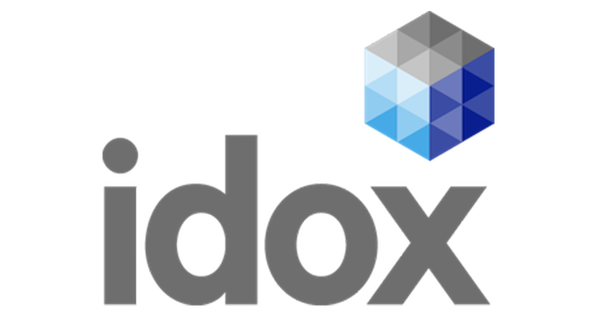Local authorities capitalise on intrinsic value of location data
Local authorities have long been aware of the value of their data, and a growing number are now realising the tangible benefits that can be achieved by integrating their datasets to gain deeper insights into their communities, the services they provide, and the income gaps they can pursue.
All local authorities can link data across their organisations by implementing widespread use of Unique Property Reference Numbers (UPRN) and Unique Street Reference Numbers (USRN) for every property and street. Scott Goodwin, Divisional Director for Land, Property & Public Protection at Idox explains how once these unique location identifiers have been added to each siloed department’s datasets, the task of linking inter-departmental data not only becomes quick and easy but also helps streamline services, increase efficiency and improve ROI.
The value of location data to local authorities
In 2020, a mandate was announced by the Government Digital Service (GDS) declaring that UPRNs and USRNs should be used by government in referencing and sharing information about properties and streets. Since this directive, the wider use of UPRNs and USRNs has shown that many councils are already making vast savings while also driving innovation and delivering more tailored services.
A report commissioned by GeoPlace shows that the widespread use of address and street data, complete with UPRNs and USRNs that underpin every location and street, could generate £384m savings over the timeframe 2022 – 2026, with an improved ROI of 6:1.
Widespread use of address and street data, complete with UPRNs and USRNs that underpin every location and street, could generate £384m savings, with an improved ROI of 6:1.
Leading the way through connecting datasets across council departments
Facing greater pressures than ever, councils are increasingly turning to their vast banks of rich data to identify where they can further increase efficiency, detect fraud and recoup lost income, while also improving services.
Advances in technology and the wider use of APIs have made connecting data easier. Pre-Covid, many councils were already integrating their systems, but relied on access to back-end data, i.e. files pushed out from the LLPG / LSG to other systems. This not only slowed the process, it also created a time lag, therefore jeopardising data accuracy.
The rapid implementation of cloud solutions and APIs, fuelled in part by the pandemic, has not only enabled the trend of remote and hybrid working to continue, but has also allowed greater data connectivity, facilitating deeper analysis, and quicker and better-informed decision-making.
The increasing ease and ability of local authorities to link and analyse their data means they are empowered to maximise efficiency, eliminate duplication and optimise the services they deliver according to priority and specifically targeted areas.
Innovation through data connectivity in action
Idox (previously as Aligned Assets) has been working with local authorities for over thirty years, helping them to create, manage and maintain their LLPGs / LSGs using its Gazetteer Management System (GMS), iManage. As this technology has advanced, so too has the utilisation of the address data held within the GMS.
Adur and Worthing Councils’ Chief Executive, Dr Catherine Howe, is a driven data advocate and is using their data to deliver innovative projects across the Councils. Using the UPRNs to link data, the Councils have pursued ground-breaking work with the policy and practice departments. This has focused on data relating to inequalities so the Councils could make proactive interventions around households they see as shifting from ‘coping’ to ‘not coping’ financially. The Councils then matched that with other location-based inequality data to find correlations that helped gain a better picture of inequality based on locations. It used this analysis to see how it could start targeting support for a community-led safety net where there was a high incidence of individuals moving into the ‘not coping’ category.
Charnwood Borough Council has been using UPRNs to drive efficiency in the management of its council-owned property. Previously, pulling this data together in a format that allowed the relevant teams to manage their tasks efficiently – such as chasing arrears, progressing maintenance or clearing fly-tipping hotspots – was challenging and time-consuming. Underpinning all the Council’s housing data with the UPRNs from the LLPG has enabled greater efficiency and cohesion for the housing teams. Housing officers and managers can interrogate data and respond more effectively to needs within their property portfolios. Charnwood has also found it quicker to gather information about council-owned property, as well as ownership and/or maintenance of any property, land and street lighting in the vicinity.
Getting started with linking your data
While local authorities are well aware of the wealth of insightful data within their reach, starting this interconnectivity path may feel like a daunting task – but it needn’t be. GeoPlace is encouraging councils in the early stages of this journey to follow their three-step process to get them started:
- Identify who your local address/street Custodian is and talk to them about matching your data to the LLPG so you can get the UPRNs/USRNs allocated. If you do not know who that is, use the LGA’s tool to find out.
- Use GeoPlace’s free UPRN integration assessment tool to see how well-integrated your council’s systems are with UPRNs.
- Ensure procurement of all new systems supports UPRN integration by using GeoPlace’s tool for the commissioning and purchase of new local authority systems’ software.
Collaborative development driving connectivity
The inclusion of these reference points (UPRNs and USRNs) – in technology or digital or data projects of all sizes and scopes – delivers value that is in excess of any investment needed.
While the LLPG / LSG provides the foundation data for interconnectivity, it takes an advanced GMS to deliver it. Idox’s iManage GMS is used by more than a hundred local authorities due to its seamless integration with other operational systems and its feature-rich capabilities. Through ongoing collaboration with customers and UI design experts, Idox is about to launch its fully cloud-based iteration of iManage. Accessible from anywhere with an internet connection, its wizard-driven processes and templates make it easy for anyone to use. Its simple tables and views make analysis and reporting comprehensive and quick. And by integrating with other systems via APIs, updates and creations are available in real-time across the organisation, making interconnectivity accurate and easy.
The ever-increasing demand for local authorities to do more with less is persuasion enough to utilise their rich data more creatively to provide better tailored services that minimise waste and maximise revenue. The universal use of UPRNs and USRNs is the golden key for linking datasets and unlocking complex data insight to provide more streamlined and innovative services, while also driving efficiency, identifying fraud and maximising revenue. As Terence Eden, senior technical policy adviser at GDS said, ”The inclusion of these reference points (UPRNs and USRNs) – in technology or digital or data projects of all sizes and scopes – delivers value that is in excess of any investment needed.”
Contact us
Contact us to find out more about how implementing our LLPG / LSG GMS, iManage Cloud, can fast-track your data connectivity.





